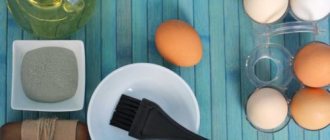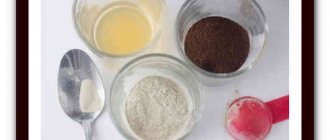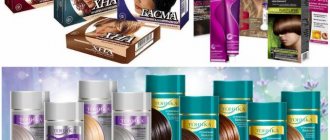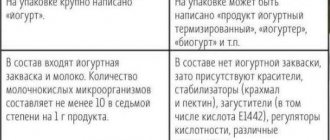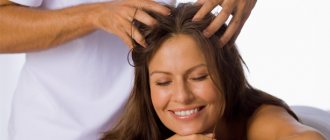Headache bothers almost every inhabitant of our planet. In this case, the pain can cover the entire head or be concentrated in certain areas. There are often situations when the skin on the head under the hair hurts when touched. Let's consider in the article what causes such sensations and how to get rid of them.
What causes scalp pain when you touch your hair?
Health workers identify three main groups of reasons that lead to the scalp hurting when touched:
- The presence of pathological processes in the internal environment, including problems with hair health. The fact is that the condition of the hairline is a reflection of a person’s overall health. If there are certain problems, for example, fungal infections, hormonal imbalances, cardiovascular pathologies, pain may appear on the scalp when touched.
- Incorrect care. The use of hard combs, tight elastic bands, squeezing headbands, and uncomfortable hats leads to the fact that the hair at the roots hurts when touched. Incorrectly selected care products also have an adverse effect on the scalp: shampoos, pastes, conditioners, stylers for fixing hairstyles.
- Psychological stress. Against the background of constant nervous stress and psycho-emotional stress, sharp changes in blood pressure levels are often observed. In such conditions, soreness of the scalp is a completely natural reaction of the body.
Regardless of why the scalp hurts when touched, in order to avoid serious consequences, it is necessary to contact a medical institution for diagnostic measures and to receive recommendations on how to get rid of unpleasant sensations.
Sensitive scalp - a reason for examination
Sensitive scalp is a relative concept and affects each person differently. Some people are concerned about the unpleasant feeling of tightness that occurs after washing, or minor irritation, for example, after coloring, but this is not the biggest problem. It also happens that it is simply impossible to touch the head, the itching becomes unbearable, and severe peeling appears. Such signs are not the disease itself, but symptoms that indicate either local disturbances in physiological processes in the scalp, or problems in your body. After all, the culprits of itching can be seborrhea, allergic or atopic dermatitis, neurodermatitis, fungal or parasitic infections, as well as stress or unfavorable environmental conditions, especially if you come to a completely unfamiliar region. If the itching becomes unbearable and your hair begins to fall out rapidly, you should not experiment on yourself using good old grandmother’s recipes, which may be suitable for a friend, but not for you. Make an appointment with a dermatologist to rule out problems that require careful treatment, and consult a trichologist. Trichology clinics have special equipment that allows you to most accurately assess the condition of the scalp. As for medicinal drugs, as a rule, these are lotions and dermatological shampoos, which are sold only in pharmacies or in the clinic itself. They use camphor, menthol and herbal extracts as active ingredients, as well as essential oils, such as tea tree or peppermint.
Maintain balance
The characteristic symptoms of sensitive skin are not always a manifestation of any disease. If a specialist has ruled out its presence, the cause should be looked for in your daily life. After all, increased sensitivity of the scalp is the result of exposure to a number of aggressive factors that weaken its natural defenses, primarily stress and the environmental situation. As a result, a film of harmful chemicals forms on the surface of the scalp. All this leads to increased production of free radicals, the physiological microflora of the skin changes, natural immunity decreases, and pathogenic microorganisms actively begin to multiply on the skin. Such negative effects are caused by an unbalanced diet, frequent drying and styling of hair with a hairdryer, wearing tight and airtight hats, aggressive lightening and frequent coloring, ultraviolet radiation, as well as improper daily care. “The scalp requires attention no less than the face,” says Olga Antonova, stylist-technologist at Charm Distribution. “It also needs to be properly cleansed, moisturized, nourished and protected from the effects of any aggressive factors that destroy the natural hydrolipidic barrier consisting of lipids. They are contained directly in the skin itself, as well as in the natural lubricant secreted by the sebaceous ducts of the scalp, providing not only elasticity, but also reliable protection. When it is disrupted, the physiological microflora of the skin changes, as a result, natural immunity decreases, and the skin becomes vulnerable to pathogens. Restoring this barrier is much more difficult than breaking it (and breaking occurs almost every day). A classic example is frequent hair washing; many clients like to abuse this. At the same time, they consider it their duty to rinse their hair literally until it squeaks, leaving it completely defenseless against the environment. Many hair wash products are also aggressive, as they contain a large amount of sulfates, parabens and surfactants, which, together with chlorinated water, is a very powerful blow. Remember the main rule: you should wash your hair only when necessary, and not following a certain ritual (for example, every morning). Be sure to use the mildest possible shampoo with a neutral pH, which will keep your scalp in optimal condition. For example, Nourishing Shampoo Visibly Thinning Non-Color Treated Hair from Bosley Professional Strength gently cleanses, restores and rejuvenates hair and scalp without causing irritation. Removes toxins to create a healthy hair and scalp environment with LifeXtend™ Complex, which improves lipid, collagen and elastin production. Be sure to use conditioner (imagine that you cleansed your facial skin with foam or gel and did not use cream). There are conditioners that are specifically designed to care for sensitive scalp and maintain its optimal pH balance, so they can be safely applied both along the entire length of the hair and on the scalp. This procedure becomes especially relevant after repeated dyeing or lightening, as well as after perm, because the composition of any (even the highest quality) preparations instantly violates the integrity of the hydrolipid film, causing unpleasant itching and burning. For example, K-Pak intensive moisturizer from the Joico K-Pak brand solves all problems caused by chemical processing, thermal damage and the negative effects of environmental factors, as it consists of 80 percent moisturizing components, including macadamia and shea butters, nourishing and moisturizing skin. This drug will relieve unpleasant itching in a matter of minutes and provide maximum comfort to sensitive and irritated skin. Another product, Volumizing Conditioner Visibly Thinning Non-Color Treated Hair, can be used daily, immediately after shampoo. Algae extract helps protect against photoaging, frequent washing and mechanical damage due to combing. Contains LifeXtend™ Complex, which helps stimulate the production of keratin protein in the hair follicle and strengthens the hair structure."
Caring - every day
If your daily procedure is to wash your hair with a mild shampoo, after which you limit yourself to natural drying and gentle combing, most likely scalp problems will no longer bother you, of course, in the absence of aggressive factors. Those who experiment with styling will have to take additional precautions. First of all, review your arsenal of styling products. “If you have sensitive scalp, it is not recommended to use styling products containing alcohol,” says Olga Antonova. — This is typical for preparations that are in a container under pressure, for example, dry varnishes, mousses and foams. Try switching to liquids with a mechanical pump or liquid varnishes, such as Spritz and Stay Non-Aerosol Hairspray (non-aerosol extra-strong hold volumizing varnish) from SexyHair. Fine spraying, uniform distribution of hairspray, does not leave a white residue. Does not contain alcohol, protects hair and skin from negative environmental influences, dries quickly, gives intense shine and silkiness. If you experience severe itching and a feeling of tightness, stop using heat styling tools for a while. These include hair dryers, straightening irons, stylers and curling irons. The hot air from these appliances dries out your scalp even more, and the same applies to the water you use to wash your hair. Let it be at a pleasant room temperature, or even better, install a special purification filter or use bottled drinking water, especially during an exacerbation period. Remember that hair brushes with plastic or metal bristles can also damage your sensitive scalp. It’s better to use a soft brush with fairly thick natural bristles, this will have a beneficial effect on both hair and skin.” To ensure the normal functioning of your scalp, try to eat a balanced diet. The most important component for maintaining optimal balance is fatty acids, the source of which is fatty sea fish, such as tuna, salmon, herring, sardine or mackerel. Plant foods include seeds, nuts, olives, and avocados. One of the most important fatty acids is found in vitamin F; it helps maintain the integrity of the hydrolipid film. There is a lot of vitamin F in flaxseed and sunflower oils, soybeans, nuts (especially walnuts and almonds) and seeds, as well as in fish and seafood. Sources of vitamin A include fish oil, beef liver, egg yolks, cream, whole milk and dairy products; green and yellow vegetables contain quite a lot of this vitamin - carrots, pumpkin, sweet peppers, broccoli, green onions and parsley. This “menu” will help you not only maintain a healthy scalp, but also ensure the growth of strong and strong hair.
Tenderness for the head
“The Tenderness care ritual from SILICIUM+ soothes sensitive scalp, gives a feeling of freshness and gives shine and tone to dull and weak hair,” says Eduard Shishlov, hair stylist at the Black Swan salon. — At the first stage, we prepare the hair and scalp for subsequent care. We wash our hair with a caring shampoo for frequent use, then rinse thoroughly and apply daily lotion. Application technique: light rubbing with initial massage. The master applies sliding pressure with his fingertips from the back of the head to the crown. Use your palm to move the scalp in place. The massage ends with smoothing the hair along its entire length. This phase allows you to stimulate the scalp and prepare the hair for further care. This stage gives a feeling of freshness and calm, revitalizes and allows you to gently begin care. The “heart” of the procedure is when the specialist applies refreshing treatment and massages the scalp under steam. Performs a smoothing drainage massage. Then spray the daily lotion over the entire length of the hair and leave (uncovered) for ten minutes. Wash your hair with shampoo according to your hair type and rinse gently for five minutes. Finally, apply detangling spray or smoothing milk (depending on hair type). Styles hair according to the client’s wishes.”
Factors contributing to scalp pain
It is worth considering that in most situations, a headache occurs when touched due to the development of pathological processes. Therefore, you cannot leave painful symptoms without proper attention and wait for them to go away on their own. Let's take a closer look at why pain is most often felt when touching the scalp. The reasons may be as follows.
Skin diseases
Pathologies of the skin of the scalp are not only painful and untidy in appearance, but also indicate interruptions in the functioning of internal organs. We list the most common diseases:
- Hyperkeratosis. With the disease, the stratum corneum of the epidermis is noticeably thickened. This leads to the fact that there is no removal of naturally dying particles of the scalp. Their accumulation leads to thickening of the outer layer of skin. Lumpiness, pustules, and hair loss appear. The presence of pathology indicates problems with the liver, thyroid gland, hematopoietic system, and gastrointestinal tract organs.
- Seborrheic dermatitis. A chronic disease in which red spots form in the scalp of the skin and can merge with each other. When the disease is neglected, the lesions spread to the face, back, and shoulder girdle. In places where the spots are localized, hair is actively falling out.
- Furunculosis. The occurrence of infectious processes in the body can lead to the appearance of compactions and rashes on the scalp. The skin on the affected areas can be very painful, especially when touched.
Vascular pathologies
Most diseases of the cardiovascular system are associated with disturbances in vascular tone. In this case, the vessels first expand, and then noticeably narrow. Such processes inevitably lead to jumps in blood pressure readings. The patient experiences the following symptoms:
- the skin under the hair on the top of the head hurts, especially when touched;
- severe fatigue appears;
- sweating increases;
- dizziness;
- nausea, vomiting.
To avoid headaches when you touch your hair, you need to keep your blood pressure levels under control. This can be done using a tonometer.
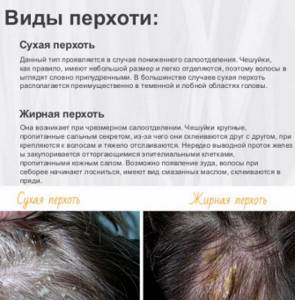
Innervation of nerve endings
Very sensitive nerves are located just under the skin. Damage to them can cause severe pain on the surface of the head under the hair, which intensifies when touched. For example:
- Trigeminal neuralgia. The processes of the neuron extend onto the face, so when it is irritated by touch, the facial and nearby areas of the skin hurt. A characteristic feature of the pathology is unilateral pain. The victims complain that the head hurts on the right or left side.
- Inflammation of the occipital nerves. When you touch the skin on the back of the head, a sharp shooting pain occurs in the neck and head under the hair.
Psycho-emotional overload
Increased mental stress, stress, as well as monotonous painstaking work that requires perseverance can cause tension-type headache. Each individual has a tension headache that manifests itself in a special way. Some people feel a moderate dull ache, while others may experience pain in the skin under the hair when touched. In this case, pathological symptoms increase in the afternoon, when accumulated fatigue takes its toll.
Vegetovascular dystonia
Pain in the scalp during VSD is due to frequent vascular spasms. In this case, blood pressure levels can reach abnormally high or low values. Patients try not to touch their hair again. Additionally, the following symptoms occur:
- fainting state;
- pale skin;
- weakness;
- gastrointestinal disorders;
- depressive moods.
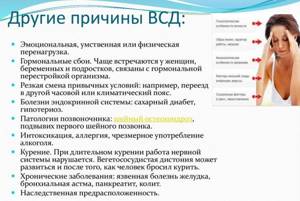
Individual characteristics
Sometimes the condition when the skin under the hair hurts when touched is a completely normal reaction of the body and does not threaten a person’s health. For example, some individuals suffer from weather dependence, and painful manifestations intensify when weather conditions change. There are also situations when the surface of the head hurts due to hypoxia. When oxygen supply stabilizes, health improves.
Incorrectly chosen headwear
When buying a hat or headband, you need to pay attention to the size. Strong pressure on the head can cause the skin under the hair to hurt when touched. In addition to pain, numbness may be felt due to pressure on the blood vessels that supply the skin and hair follicles.
Other factors that make you feel worse
Listed above are the main conditions under which the skin under the hair hurts when touched. However, there are additional unfavorable factors:
- bruises of the skull;
- hormonal changes;
- infrequent hair washing;
- migraine;
- allergic reaction;
- prolonged exposure to drafts;
- frequent hair drying with a hairdryer, straightening with an iron.
In any case, if unpleasant sensations appear when touching the surface of the head, it is necessary to establish the true cause of the pain. Otherwise, irreversible consequences may occur, including baldness.
How to choose the right mask for yourself
To select and prepare the ingredients, you need to determine your skin type - oily, dry or normal.
- If you have to wash your hair frequently, about once every 2-3 days, then your skin is oily. This happens in adolescents during puberty.
- If the hair is thin and breaks when stretched, it means there is dehydration and dryness.
- Normal skin requires washing once every 4-5 days, sometimes more. At the same time, the appearance is not lost, the hair does not look greasy.
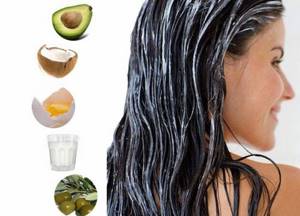
Nourishing hair mask ingredients
Based on your skin type, ingredients for masks are selected. For dry skin:
- egg yolk;
- olive oil;
- Coconut oil;
- shea and avocado;
- Castile soap;
- apple cider vinegar for rinsing.
For oily skin:
- green or blue clay;
- colorless henna;
- infusions of herbs - oak, chamomile, St. John's wort, nettle;
- sour milk (homemade);
- lemon juice;
- black bread;
- tea tree oil, eucalyptus, pine, sage, mint;
- oat flour;
- mustard powder;
- honey;
- aloe;
- vodka with lemon.
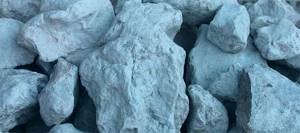
Blue clay cleanses pores well and absorbs oil
For normal skin:
- citrus oil – orange, lemon;
- lavender, cedar oil;
- wheat and silk proteins;
- vitamins in capsules A, E, C;
- calendula, chamomile extract - can be bought at the pharmacy.
A mask for sensitive scalp and dry hair is applied after each wash. Oily hair requires more frequent care; at first, the product will need to be applied daily.
Places of concentration of unpleasant sensations
To establish a complete picture of the development of a particular pathology, when the skin under the hair hurts during touching, you should pay attention to where exactly the pain is concentrated. For example:
- if the head hurts on one side, we can talk about the development of migraine attacks;
- when the top of the head hurts when touched, most likely there are pathologies of the cardiovascular system;
- with neuralgia, the pain radiates to the occipital part;
- The temporal region suffers during inflammatory and infectious diseases such as otitis media and periodontitis.
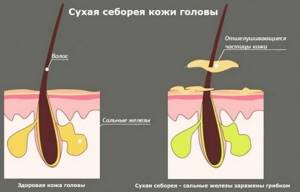
Diagnostics
Since the skin under the hair can hurt from touch due to various diseases, a comprehensive examination will be required to identify the cause. Usually the doctor prescribes the following diagnostic procedures:
- visual inspection;
- laboratory blood tests for hormone and glucose levels;
- Analysis of urine;
- Ultrasound of the cardiovascular system;
- blood pressure measurements;
- MRC, CT of the head;
- Ultrasound of the thyroid gland.
Also, during the examination, the patient must be told the smallest details of the appearance of scalp pain when touched. For example, “it hurts to touch the left side of the head” or “after a fall, a lump appeared on the back of the head, it is impossible to touch the right side.”
Which doctor to visit
Many people do not know which doctor can help when the skin under the hair hurts from touching. First, you should visit a therapist. After the initial examination, he will refer the patient to a specialist. In such situations it could be:
- angiologist;
- trichologist;
- dermatologist;
- endocrinologist;
- neurologist;
- traumatologist;
- psychotherapist.
After establishing the true cause of the pain, the patient will be prescribed the optimal therapeutic course.
How to quickly help at the beginning of the development of pathological symptoms
Let's look at what to do to alleviate the condition when the scalp under the hair hurts.
Massage
If the blood supply to the scalp is disrupted, a light massage will help you come to your senses. Using circular movements with your fingertips, you need to move from the back of the head up to the crown. Then you also need to smoothly descend back. Massage will help disperse the blood.

Salt peeling
To prepare, you will need to mix twenty grams of sea or regular table salt with a balm suitable for the patient’s hair type until smooth. The resulting mixture will need to be rubbed lightly into the scalp, left for three minutes and rinsed thoroughly. The procedure is useful for removing dead skin and improving blood supply to the head.
Mask based on mustard powder
Please note that the product is not suitable for dry skin and hair, as well as in the presence of inflammation and wounds on the surface of the head. You need to prepare a mask by mixing mustard powder, warm water and a few drops of burdock oil. Keep the mask on your hair for no more than thirty minutes. Warmth and slight tingling may be felt. The product perfectly stimulates blood circulation and prevents excess sebum secretion.
Aromatherapy
In order to get a therapeutic relaxing mask, you will need to add a few drops of essential oil to olive oil. Best suited: mint, rosemary, sage, lemon. The mixture will need to be left on the hair for twenty minutes.
P Why does the scalp become sensitive?
There is no clear answer to this question. Excessively sensitive skin can bother a person from birth or, which is more common, arise later under the influence of external or internal factors.
The most common reasons:
- hormonal disbalance,
- avitaminosis,
- using inappropriate hair care products,
- mechanical or thermal damage allowed during installation, chemical damage during painting,
- sudden climate change,
- exposure to the sun,
- dry air,
- the presence of an endocrine disease.
